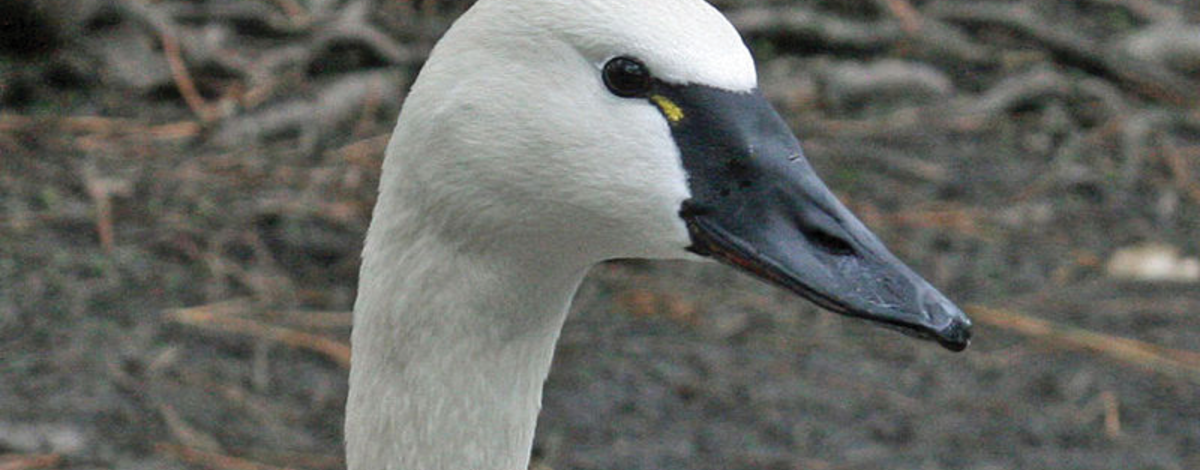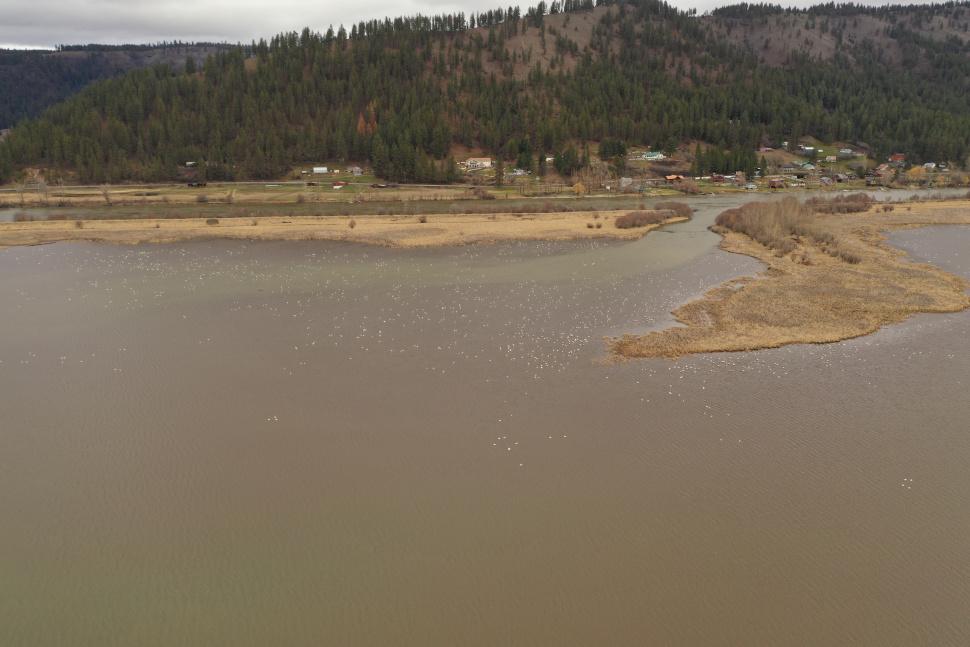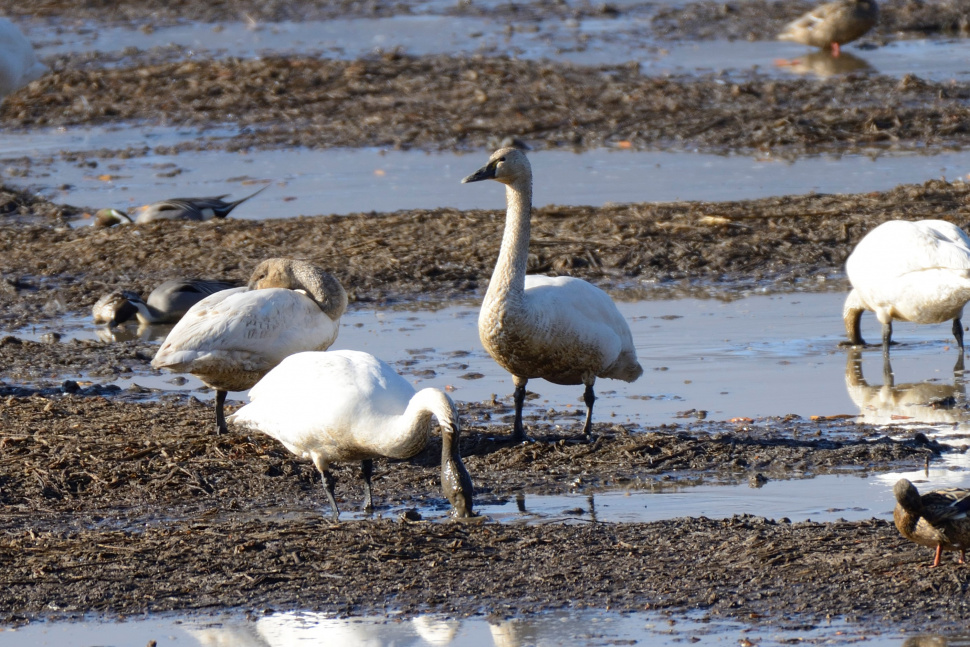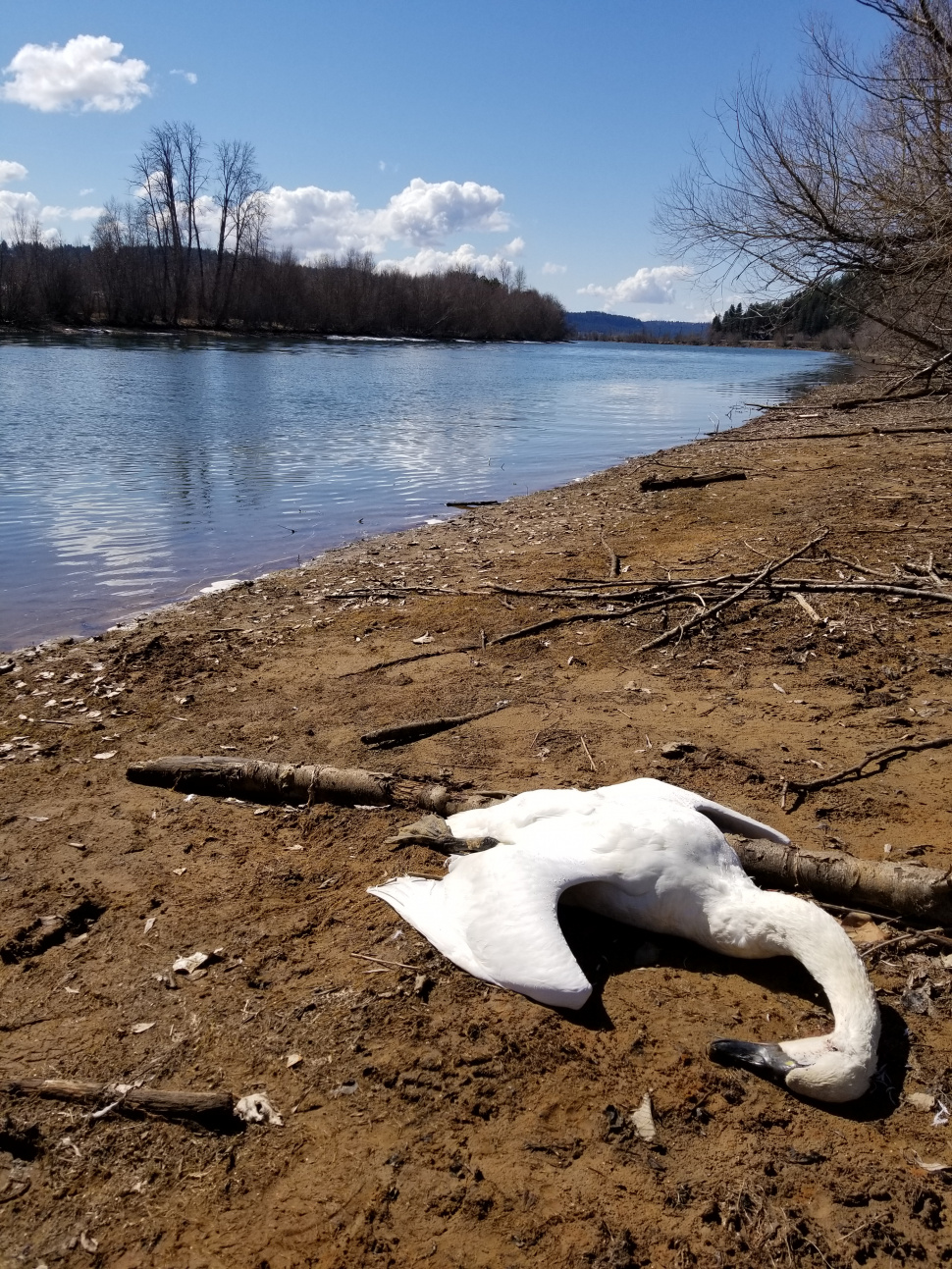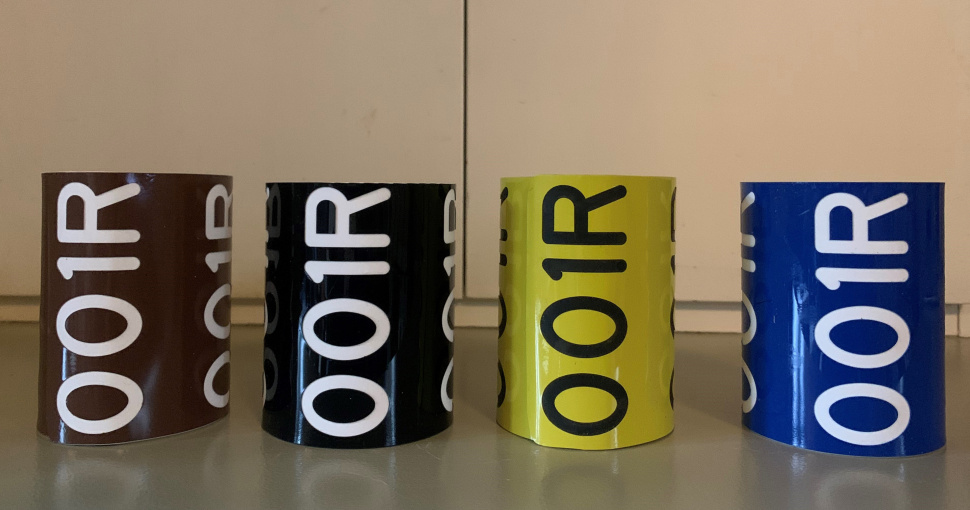Just recently a team of scientists from the Environmental Protection Agency, US Fish and Wildlife Service, Coeur d’Alene Tribe and Idaho Fish and Game embarked on a study to develop tools to track long-term trends in waterfowl health and exposure to lead contaminants in the Lower Coeur d’Alene River Basin. The tools will help them gauge how well on-the-ground restoration efforts are working.
Give the video below a watch to get an idea of what the operation was all about.
The iconic and majestic tundra swan is an important part of Idaho’s rich wildlife heritage. If you’ve taken a drive around the south end of Lake Coeur d’Alene lately, you can relate.
Every spring, thousands of swans arrive in the Lower CDA River Basin. The spectacle occurs as the swans make a pit-stop on their migration route between wintering areas in the central valley of California and their breeding grounds on the Yukon River delta and west coast of Alaska.
While visiting the numerous marshes at the south end of the lake, the swans feed, frolic, rest and then move on.
It’s no secret that Idaho also has an important heritage of mining, particularly in the Panhandle. An unfortunate by-product of historic mining practices is that marsh and river sediments in the Coeur d’Alene River Basin are heavily contaminated with lead and other toxic metals like arsenic, cadmium and zinc.
These sediments entered the Coeur d’Alene system in an era when mine tailings were disposed of directly into the waterways of the Coeur d’Alene drainage. Such practices ended in the middle of the last century, but their legacy remains.
Although all species of waterfowl are affected by the contaminated sediments, swans are hit the hardest because of how they feed. Their long neck enables them to root around in sediments on the marsh bottoms in search of roots, seeds and other food. This increases their exposure to contaminated sediments much more so than say a surface dabbling mallard duck or a terrestrial grazing Canada goose.
Each spring, as the tundra swans stop-over in the Lower Coeur d’Alene River Basin, Fish and Game receives calls from the public about dead and dying tundra swans.
The number of deaths varies each year depending on when the swans arrive and how long they stay in the basin. Average annual swan deaths since 2008 are estimated to be between 50 and 60 birds. As unfortunate as this is, the tundra swan population is stable.
There is really little an individual can do, but there is a multi-government effort actively implementing projects on the ground to address the problems.
However, if you happen to see either a living or dead swan with a neck collar, you can help by reporting the collar color, number and location to Fish and Game’s Dave Leptich at (208) 769-1414.
The Restoration Partnership is a group of federal, state and tribal governments that is taking action to reduce contamination exposure in swans and other wildlife.
The Partnership completed a comprehensive restoration plan in 2018 that laid out a strategy and mitigation funding source for restoring wetlands and protecting waterfowl and other wildlife from further damages.
The Partnership is working closely with the Environmental Protection Agency to coordinate their efforts with EPA’s mission to clean up the contaminated sediments and reduce lead exposure to wildlife and to people living and recreating in the Lower CDA River Basin.
Visit the Restoration Partnership website to learn more.
Starting in 2015, the Partnership began restoring contaminated wetlands so that they offered clean and/or reduced contaminant habitats for wildlife. Similar work is still and will remain underway for several decades. When it comes to this type of work, the long-game is king.
The collaborative work of all entities involved in the Partnership has and will continue to play a critical role in restoring the habitats to which we and the swans both call home.
Please contact the Panhandle Regional office at (208) 769-1414 if you have any questions or would like to learn more about swans in the Panhandle.
Follow us on the Panhandle Region Facebook page for regular updates and news.

